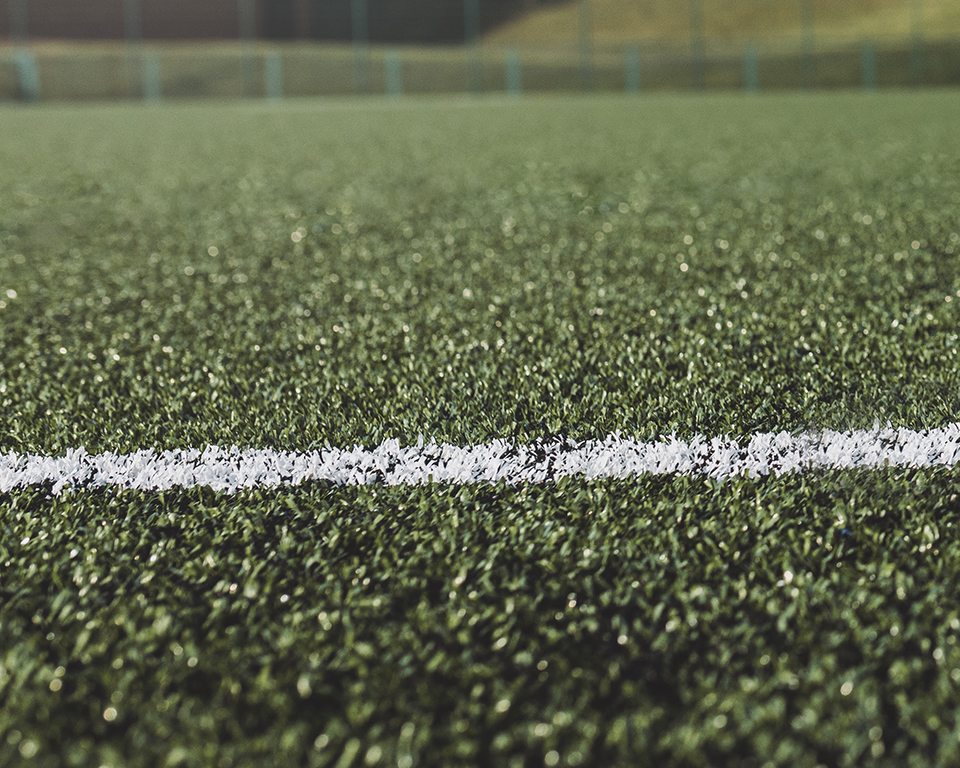Pitches must pass approval by leading rugby governing bodies. In England, the RFU and RPA oversee the approval process, assessing a surface’s suitability and impact on player welfare.
Ever since RFU approved the use of artificial ground types in professional rugby, debate has subtly raged across the community over its suitability. Players, pundits, and fans are locked in dispute when weighing up the pros and cons of playing on 3G turfs.
The Pros and Cons
So, let’s break it down objectively. They’re proven to be durable year-round for multi-use (rugby, football, entertainment events, etc.), as well as being low maintenance for groundskeepers.
On the other hand, 3G pitches are expensive to install. Moreover, they throw up injury concerns – specifically, friction burns and impact damage. As outlined by many pros, the common carpet-like burns that chew up flesh poses legitimate cause for concern.
Internal damage to muscles and ligaments is thought to be more common on firm artificial pitches with less give. Not ideal for excessive side-steppers.
Player’s For and Against
Luke Edwards, Development Manager at SIS Pitches, told Rugby World in 2019
“the surface will perform consistently throughout the entire season; traction, shock absorption and head impact criterion will be the same all year, whatever the weather.”
Seems like an obvious stance from a business perspective.
His view is valid – 3G pitches have been proven to provide consistent usability whatever the weather and are low maintenance. Proponents argue the financial benefits of providing clubs and communities with pitches with more year-round availability due to their ability to withstand the elements and drainage systems.
But many professional players strongly disapprove of 3G regardless. Chiefs, England, and Lions winger Jack Nowell claims 4G pitches are “horrendous”.
Speaking on RugbyPass’ Offload podcast, he outlined personal struggles with patellar tendonitis in his youth, as well as feeling sore during midweek training sessions following weekend matches due to the turf’s firmness.
But it’s the abrasive element causing the most concern. Players regularly vent their frustration with artificial grounds on social media and share images of their injuries.
Candid loosehead Joe Marler concurs; he tweeted a simple statement last year: “Ban 4G pitches”.
Nowell and his teammate Henry Slade shared their support, while ex-Olympic swimmer Sharron Davies claimed her son’s knees were being torn to bits as a result of playing on artificial surfaces.
Does it affect gameplay style?
Data gathered from 288 top-flight games over the 2017/18 season by StatsPerform suggests a marginal tendency for players to keep the ball away from contact during matches played on five artificial pitches.
Some say synthetic pitches produce a quicker brand of rugby. We’re inclined to agree, purely based on a logical assumption that shorter-bladed plastic turf allows players to run faster. Think of 3G as an athletics track when compared to the average natural grass pitch.
Best of both worlds
Maybe there’s a mediator in the madness. Cue the ‘hybrid’ pitch as a compromising contender. Made of 60% natural grass and 40% synthetic blades, these pitches make for an ideal middle ground, offering organic feel with ultimate durability.
Nowell concedes hybrid pitches are ideal.
“If you put a grass or Desso [hybrid turf brand] pitch next to a 4G one, you’re choosing Desso all day.”
Currently, rugby governing bodies only recognise hybrid and 3G pitches (with rubber crumb infill) as suitable for the three rugby codes.
Pitches branded as 4G are known as such purely for marketing purposes. They differ from 3G as they lack infill and are yet to be approved by governing bodies. That makes Marler’s tweet technically inaccurate – he’d play on 3G pitches. (Not that we’d be so pedantic and correct him on it to his face.)
Although the playing properties are rigorously tested by the RFU for safety and performance measures, opinions remain divided.
Will Synthetic Surfaces Last in Rugby?
Replicating perfect natural grass is the goal. And to be fair, synthetic turf technology has come a long way in a short timeframe.
Now well into its third generation (hence the term ‘3G’), manufacturers are continuously developing innovative solutions to improve pitch performance and player safety.
With enough lobbying from those inside the industry with support from public campaigning, it’s feasible artificial turfs could be outlawed – at least in the professional game.
A complete 3G ban for rugby is highly unlikely, however. Companies and communities around the world have heavily invested in the turf revolution and the infrastructure is customary now. Plus, it would be a difficult PR move for governing bodies to reverse their approval stance.
As players, it looks as though we’ll just have to lump it, and deal with the grazes and strains for the foreseeable future. In October 2021, World Rugby announced that wearing tights or leggings will be permitted for match use, to the dismay of old-fashioned rugby purists.
When playing on artificial grass, you should make sure to mitigate injuries with the right gear. Choose from our range of Firm Ground boots and Compression Base Layers to protect your skin from that pesky rubber crumb.
Which side of the turf war are you on? Let us know by leaving a comment below!
In the meantime, why not check out our latest guides and news right here at The Full 80. You won’t want to miss this.


4 replies on “The Rugby Turf War: An Artificial Ground Dispute ”
Hi
My son (16 years old) is playing a decent level of rugby (academy u17/18) and is subjected to these burns continuously. His team mates too.
I am a sports medic and have seen a rise in ACL injuries in particular. There are other variables involved in that I am sure. However, the burns are particularly bad.
I would be interested in knowing if there is a growing petition or movement against these pitches. I appreciate there are lots of financial pressures but beyond the age of 13/14 there really needs to be al something done. Players are too heavy and too fast.
There are a lot of high profile players (footballers as well) who are against them.
Hey Matthew,
Thanks for reaching out! We’re sorry to hear about your son and his friends getting burns from these 3G/4G pitches. As far as we know, there’s no clear move to ban them specifically due to injuries. The situation might evolve as more research is done and more data comes in.
It’s worth noting that back in 2019, the RPA (Rugby Players Association) called for artificial pitches to be banned in the Professional game due to spiraling injury rates. However, this call was left with World Rugby and the Premiership with no apparent resolution.
Interestingly, some professional players, like Jack Nowell, actually refuse to play on artificial pitches due to the risks of injury, supported by data showing that injuries on artificial pitches take longer to recover from.
We’ll keep you posted on any developments, but we’d highly reccommend you contact the RFU to see if they can help shed light on the situation further.
Thanks!
Reading this with great interest.
My son has a fractured hip from a pretty hard game on Sunday which was also on a 4G pitch.
He trains and plays 4G a lot… so I never gave this a thought but one his coaches flagged the surface as possibly being a contributory factor.
Having reviewed the video footage from the weekend, I’m wondering if the surface of the pitch was the key factor in the severity of his injury. Sadly he now misses out on several finals and a number of tours…
I’d be very interested to learn more on this.
Hi Katherine,
Many thanks for taking the time out of your day to have a read, it’s greatly appreciated! I’m sorry to hear that your son has fractured his hip, that’s never an ideal situation to find oneself in. Unfortunately the injuries sustained through the use of 4G pitches aren’t reported on enough, and ever since the Rugby Players Association called for artificial pitches to be banned in the professional game, World Rugby and the Premiership have gone quiet on the matter.
It is certainly a possibility that the 4G pitches could have been a key contributing factor, but this is hard for us to comment on on our end. As a result, I’d strongly recommend you contact the RFU to see if they can give you any further insight into whether there’s been any further reports on there being a correlation between increased injuries sustained through 4G pitch surfaces.
Wishing your son a speedy recovery in the meantime!